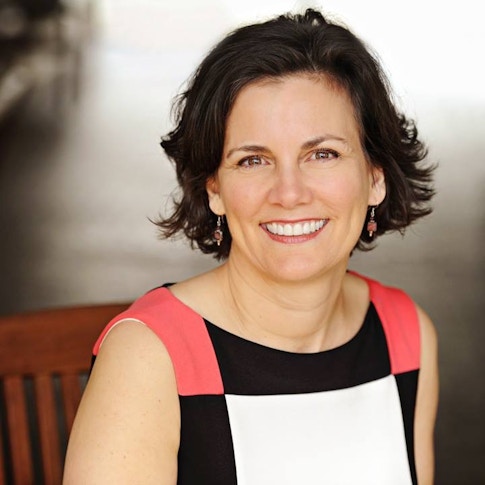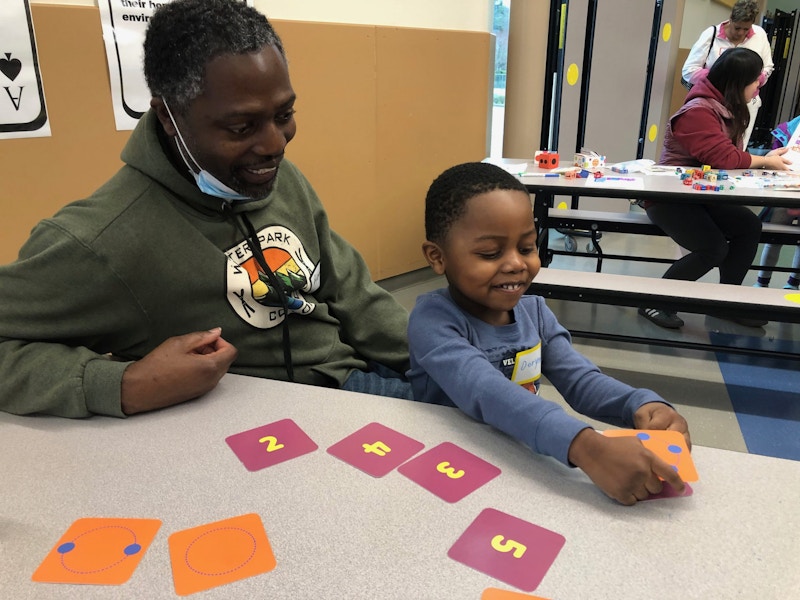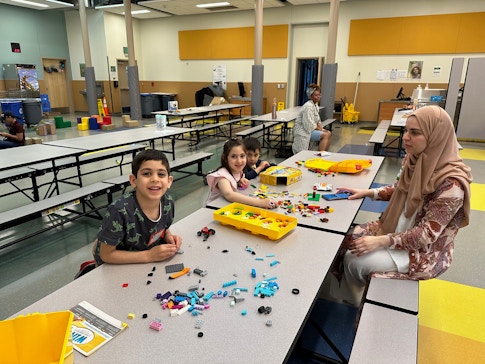
Interview: Tracy Drinkwater from the Seattle Universal Math Museum

How can math help us understand the world we live in? How do we get more people to relate to it?
These are just some of the questions that Tracy Drinkwater, president and founder of the Seattle Universal Math Museum (SUMM), has been grappling with for years. To help answer them, and to share the beauty and real-life applications of math in our world, Drinkwater founded SUMM. Interactive experiences that bring math off the paper are the cornerstone of the museum experience, aiming to create more positive associations with math for people of all ages.
Science Sandbox recently spoke to Drinkwater about her work. The transcript below has been edited for clarity.
Tell us about yourself and your journey through math.
I have always loved math. It was my favorite subject in school, and when I went to college I thought that I would probably be a math major. But by the end of my freshman year, I had my first bad experience with a math teacher. I thought, “Oh, I got my first low grade on a math test, I can’t be a math major.” I look back on that and think how silly that I let one bad experience affect me, but also how lucky I was that it took that long to experience it.
So many people experience what I did at a much younger age, affecting the trajectory of their school and career interests. I ended up switching my major from math to economics and getting a master’s degree in business as well. I came away from my business degree thinking that someday I would like to teach middle school math. Later on, I completed my master’s degree in teaching, with a focus on math as well as special education, because one of my daughters has special needs. Around 2013, I found out that there was a math museum in New York, the National Museum of Mathematics (MoMath). I was so excited to see that somebody else had the idea for a math museum, and were successful, which was a real confidence boost. It took me nine years, but I eventually started the Seattle Universal Math Museum.
For those of us who don’t know, what is a math museum, exactly?
I get that question a lot. People think museums mean historical stuff. They ask us if we’re really going to have calculators and slide rules and Abaci behind glass at SUMM. And I tell them, no, we want it to be a hands-on museum. The museum is designed so that visitors can interact with displays and learn in a kinesthetic way. It’s a highly visual and physical experience. That’s what’s missing in most math classes. We need more of the type of interactive math experiences that start in kindergarten, but that tend to disappear as the students get older. We want people to come away having a positive emotional experience with math; there’s not enough of that in the world and those positive emotional experiences help people remember things.

What kind of programming does SUMM offer? What do the partnerships look like in the Seattle area?
One of our partners is Zeno Math, a Seattle-based math engagement non-profit. When they started working with elementary school kids, they realized that they needed to go even further back — to preschool. It’s funny because we’ve kind of gone on that same journey. I’ve been saying middle school, but really, we look at third to eighth grade as our target. I had been thinking that I wanted to work with Zeno because once we have the museum up and running, we want it to have a low floor, high ceiling concept — where anyone can engage with something and play with it and have fun. In partnering with Zeno, we came up with a program called Family Math Fun. We meet with kids aged 3 to 10 and their families, and they come and learn math with us through interactive learning. What I love about this is that it’s not only the children learning, but the parents are learning too. We also try to get as diverse a group of families as possible, and bring our programming to areas that don’t have a lot of offerings for math enrichment.
Are there any moments that you look back on that make you feel particularly proud?
Recently, we had an event where attendees told us about what they want to see in a math museum. They were teenagers and children as young as eleven, and they were talking about wanting to plan exhibits and programs and wanting to help do art and be creative. They were really about, “how can I help?”
What advice would you have for people interested in this work or who might be coming to SUMM, and thinking about making a math museum in their hometown?

You’ve got to believe in your dream. I never wanted to be a salesperson because I thought, with my personality, I couldn’t fake it. I’d have to really believe in my product. But with SUMM, I’m all in. It took me a few years to make that decision, and I was advised that something like this takes time. Everything takes longer than you think. And just when you think you’ve scratched the surface of one area, you’ll realize there’s more. It helps to have a good idea; that people see a need, that you’re filling a need and that it’s somewhat unique.
What’s one thing you’re looking forward to in the next few months for yourself and for SUMM?
One exciting thing is that we’re fundraising for our SUMMobile. The idea is an electric vehicle of some kind that we could use to take our activities directly to students. At the same time, we’re also scouting out temporary locations, called SUMM Place. The long-term goals of the main museum are still several years off, so, SUMMobile and SUMM Place are the stepping stones to help us get there. It’s all very exciting!


